Varieties and installation of piano loops

Despite the fact that piano hinges are now considered to be outdated fittings, they can still be found quite often in new furniture. In this article we will talk about the design features, purpose and method of installing piano loops.

Features and purpose
The piano hinge is an ingenious mechanism that is used in the manufacture of furniture and other household items. It provides the ability to install hidden fasteners. And it can also be used when other mechanisms are not able to withstand the weight of the element.
Despite the fact that a huge number of other awnings are practiced in modern furniture production, the presented device continues to be in demand.

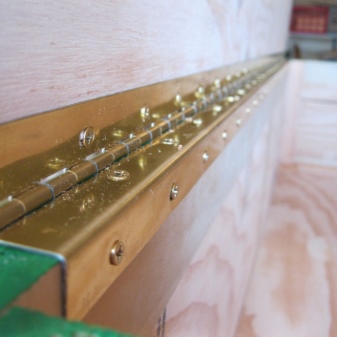
Royal loops are also called card loops. These are single-hinged multi-tubular structures that include 2 plates. One side is fixed from the inside of the facade, for this you can use the grooving method. The other side is fixed to the end of the side wall of the case on the furniture product.
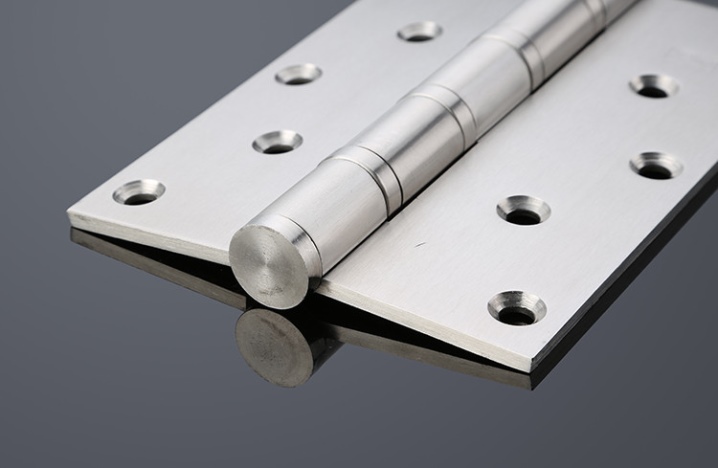
Advantages and disadvantages
During the existence of these hinges, many people have appreciated the strength and reliability of this type of fastening. Consider the following positives:
- the ability to withstand various loads and the impressive weight of the front part;
- providing additional rigidity;
- affordable price;
- the place of the fastener is almost invisible.
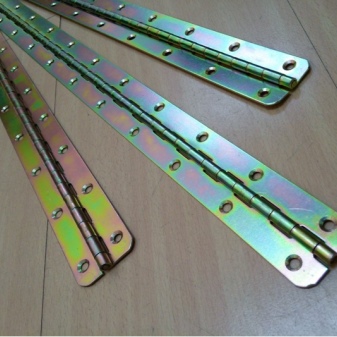
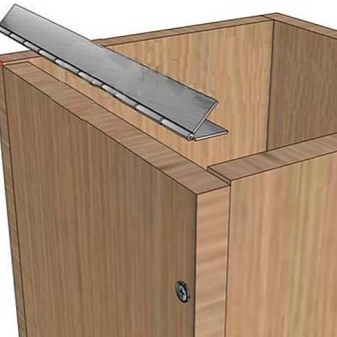
In addition to the listed positive qualities, card loops also have disadvantages. It is also necessary to familiarize yourself with them before purchasing products, although the disadvantages do not greatly affect the installation. The following weaknesses can be noted:
- inconvenient installation;
- piano loops are too large, as a result of which they often remind of furniture of the USSR era.
Despite all the imperfections, the piano hinges do not warp during use. The load is distributed proportionally along the entire length of the product. All modifications of piano hinges are distinguished by their reliability, even products made of thin sheet steel.
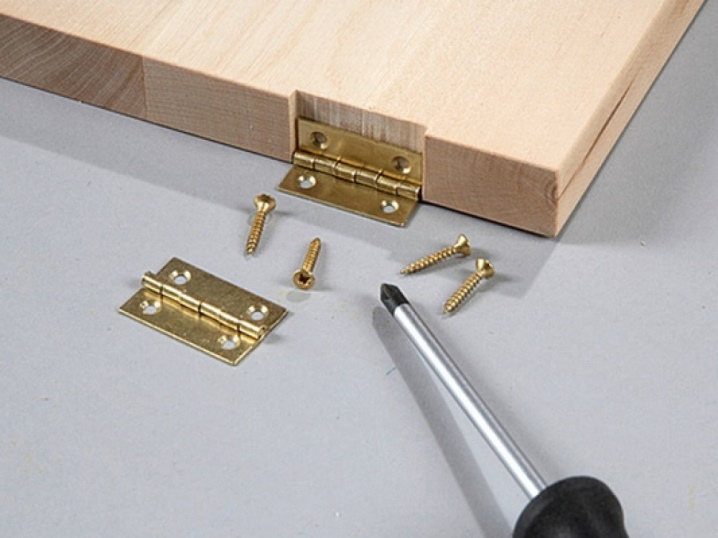
Scope of application
These devices are ideal for installation in heavily used door openings as well as furniture doors and drawer lids that are regularly opened and closed. They are truly indispensable in movable structures that need to add extra rigidity.
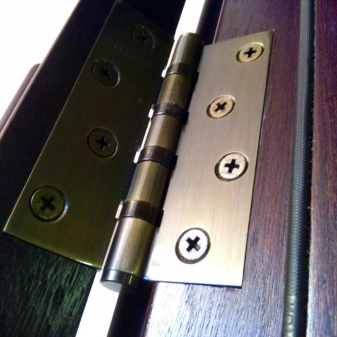
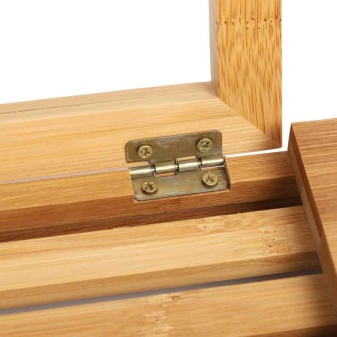
Here are some examples of where you can practice them:
- security and fire doors;
- expanding partitions in the form of an accordion;
- openings of fences, cage doors;
- folding sidewalls of the tractor hood;
- entrance doors to showers, basements, storage rooms, sheds;
- hatches, dashboards and other equipment of ships, yachts, aircraft;
- wardrobes, folding seats, folding tables, book tables, chests, ottomans;
- boxes for inventory, toys, tools.
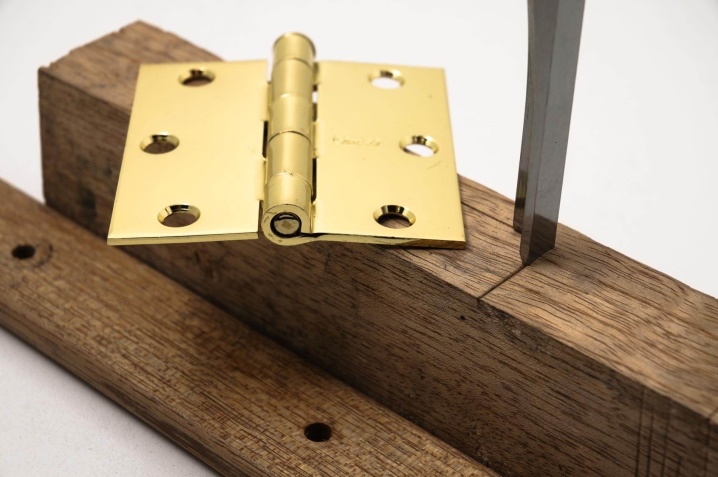
Species overview
Based on the design and dimensions of the furniture fronts, suitable piano hinges are also selected. There is no special classification for card loops. In many ways, they are divided according to the material of production. Here we can distinguish constructions made of:
- become;
- brass;
- nickel;
- stainless steel (stainless steel);
- aluminum;
- alloy using all kinds of galvanizing.

In the variant with zinc, the technology of galvanizing a variety of alloys is practiced. The galvanized hinge can be either brown, black, red, yellow, white, or reproduce gold, silver, bronze and others with precision.
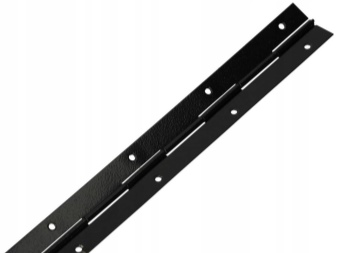
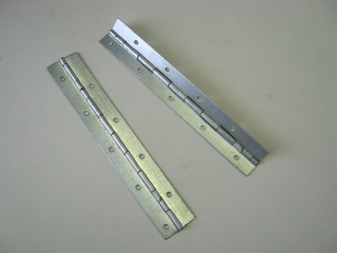
Steel has the greatest strength and is sold at a reasonable price, but it is not resistant to rust formation in unstable conditions. It is recommended to use such hinges in a controlled environment, for example, inside buildings, where normal temperature and humidity levels are maintained.
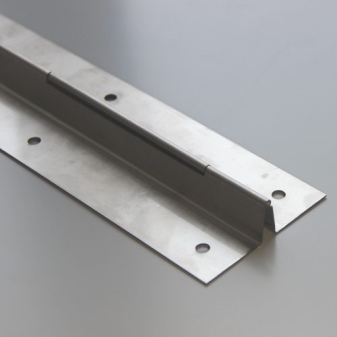
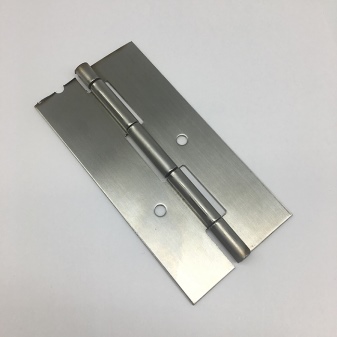
Stainless steel is also very tough and resistant to corrosion in humid and outdoor environments. Non-corrosive card loops meet the requirements of hygiene, which makes it possible to practice them in food and medical equipment. In addition, they have a beautiful satin finish or have a glossy finish.
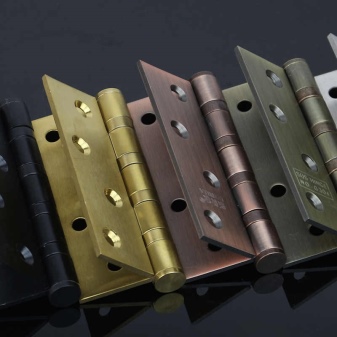
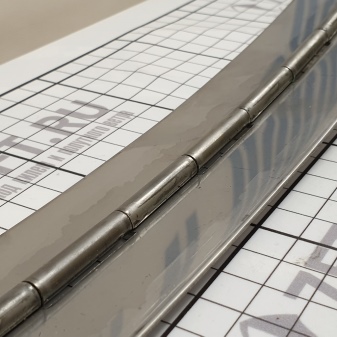
Brass does not lend itself to rust formation, is stable to oxidation and is very decorative. But it has less strength when compared to steel and stainless steel. Aluminum is a light metal with high anti-corrosion properties. Aluminum hinges are distinguished by their aesthetics, low price, however, under significant loads they are capable of bending, as a result of which they are not suitable for use in heavy door systems.
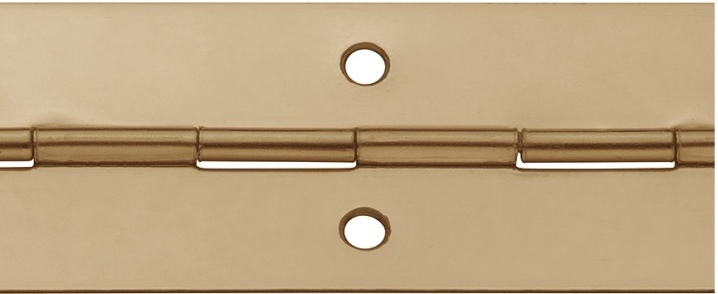
Products can also be systematized by size, dividing them by length, width and thickness. It is recommended to pay attention to the characteristics of the thickness. There are ordinary hinges or reinforced hinges made of thicker material.
Dimensions (edit)
The height of this fastening device ranges from 100 to 3500 millimeters in 15 millimeter increments. The thickness of the loops can be up to 1.5 millimeters, the width parameters are in the range from 20 to 40 millimeters. The turning radius of this structure is 90 °.
Here are the standard hinge dimensions:
- in height: 100, 250, 500, 815, 1000, 1700, 3500 mm;
- width: 20, 25, 28, 30, 32, 35, 40 mm;
- thickness: 0.5, 0.7, 0.8, 1.0, 1.5 mm.
When devices do not fit in length, they are usually cut to the required size of the facade.

Installation rules
When the loop is made in accordance with GOST, it will be extremely strong, reliable and of high quality. However, choosing from a photo on the Internet is not the best option. It is safer to visit a retail outlet, check the mechanisms by touch, test their performance on the spot.
Before proceeding with the installation of card loops, the following tools and materials should be prepared:
- installed mechanisms;
- screwdriver (if not, you can use an ordinary screwdriver);
- a set of screws for fastening (a large number may be required);
- a ruler and an awl to mark surfaces.
In addition, countersinking may require an electric drill and an 8mm drill bit. However, a countersink is not needed if the holes on the hinge are staggered.
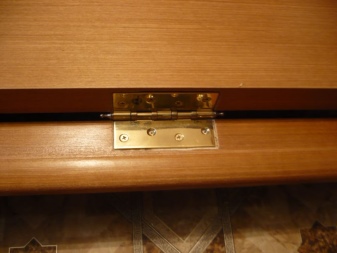
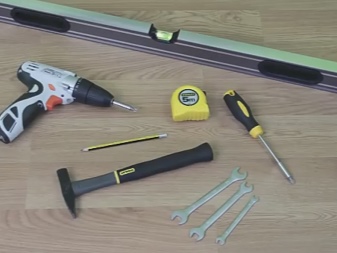
A positive point for these mechanisms is that almost always during their installation there is no need to make grooves in the furniture facades - it is enough to install the fittings using the overlay method. If you do not know how to do this, then this step-by-step instruction can help you:
- take a loop, the length of which will exactly match the length of the furniture facade;
- attach it to the facade and, after making sure that it is in the correct position, use a regular awl to mark the places for fixing the screws (press hard);
- using a screwdriver and screws, carefully fix the overlay device so that it does not move in space;
- before final tightening, once again make sure that the card fittings are really installed correctly.
Each card hinge installed at this stage is screwed to the furniture facade in the same way. You can control the process using a small building level.
Do not forget that it is necessary to fasten the extreme screws first, and only after checking the accuracy of the position of the door in relation to the case, you can slowly tighten the rest of the products.
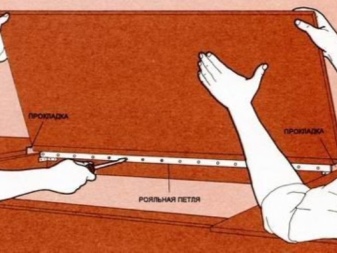

Useful Tips
The installation of piano hinges must be taken with great care, since they cannot be adjusted, even if you strongly want to. The impossibility of adjustment is due to design features, therefore, from the very beginning, it is necessary to achieve an even position of the door in space. To create conditions for long and stable operation of the hinges, remember about timely maintenance - lubrication.
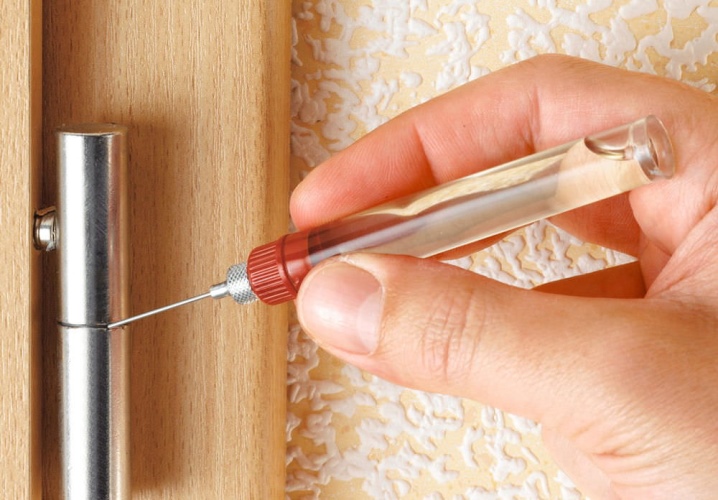
If the mechanisms begin to creak during use, do not immediately dismantle them and install new elements. As a rule, such extraneous sounds are associated with a lack of lubrication inside the hinges. Furniture fittings can be lubricated with a special aerosol or WD-40 automotive lubricant, which can be purchased at any auto parts store.
For more information on piano hinges, see the following video.













The comment was sent successfully.